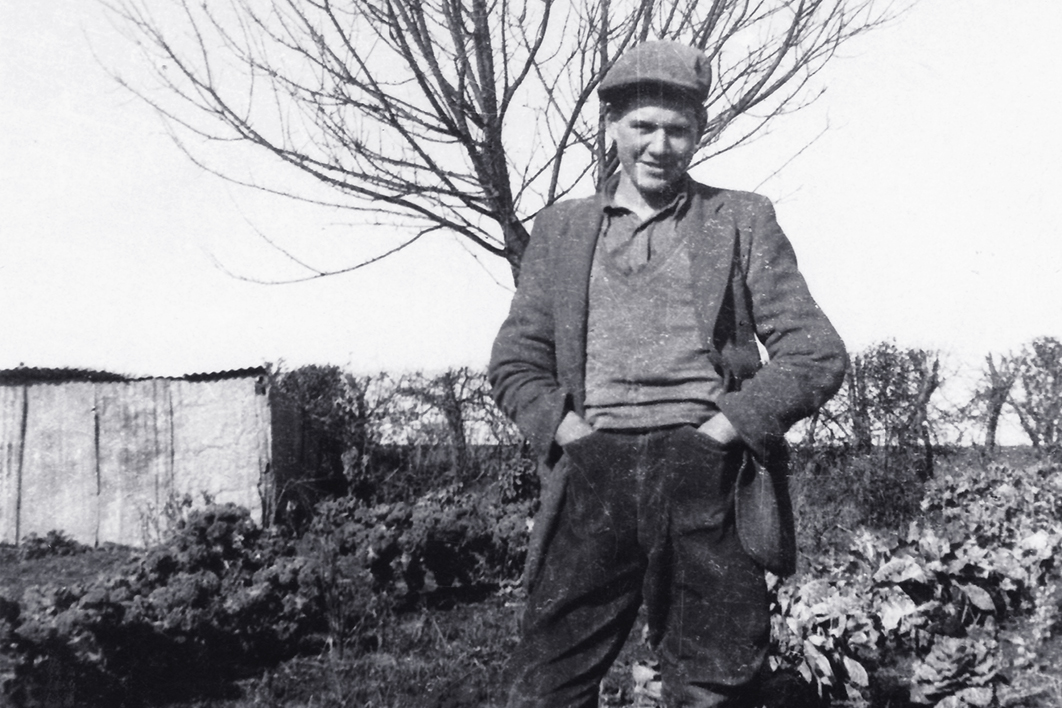
Reading other people’s mail is one of the pleasures of being a biographer, the toil of deciphering illegible handwriting in archives rewarded by glimpses into the private worlds of the writers. The correspondence may be inspiring or prosaic; it may simply provide a scrap of biographical information. My bookshelves bulge with another form of archive, too: collections of letters by writers who have turned correspondence into an art, usually edited by academics and most often featuring writers who are no longer with us.
How rare it is then to read a collection like Alex Miller’s A Kind of Confession: The Writer’s Private World, a rich blend of letters and notebook extracts by one of Australia’s most loved novelists who is still here and still writing. We may mourn the loss of the paper trail since the advent of the internet, but one thing this book demonstrates is that emails can be crafted as carefully and thoughtfully as letters written by hand on the finest notepaper.
Stephanie Miller, who skilfully and sensitively selected and arranged the pieces, notes in her introduction that this book can be read as a complementary volume to her earlier edited collection of her husband’s stories, excerpts and commentary, The Simplest Words, the two books forming, in her words, a kind of autobiography. A Kind of Confession may be seen as a form of life writing as it delves into the inspirations, joys, struggles and frustrations of the storyteller behind Miller’s thirteen (to date) novels and one biography.
In this different kind of confession from most memoirs, Miller’s friends and fellow letter writers share his private world and play a crucial role in it. Most of the words are Miller’s — only occasionally are his friends’ responses included — but the warmth and inclusiveness of his letters create the illusion of multiple voices. Stephanie Miller has also included succinct notes introducing each of the correspondents.
Organised chronologically from the early 1960s to 2023, the letters and notes are diverse and engrossing. As they are written in the perpetual present, time becomes both immediate and retrospective for readers — who may be familiar with many of Miller’s novels — as they observe his ideas developing and dive deep into his life, his beliefs about the writing process, the background to the production of his books, and his reactions to their reception. The journey is absorbing, touching, at times funny and always enlightening.
The correspondents are too many to do justice to in a review, but among them are familiar names, such as writer and philosopher Raimond Gaita, biographer Hazel Rowley, historian Tom Griffiths and artists Rick Amor and John Wolseley. Miller also corresponds with friends he gathers during the writing of his novels and biography. Some appear briefly, others recur.
One with whom Miller discusses literature, politics, his writing highs and lows, and life in general is Ron Sharp, an English professor at Vassar College in New York State, whom Miller met at the Mildura Writers’ Festival in 2004 and with whom he and Stephanie have become close friends. “Ronaldo” is the first to hear about Miller’s tentative plans to research the life of his long-term friend and mentor Max Blatt, as well as his reservations about writing the book that would eventually become the acclaimed biography, Max.
An academic but also a confidant, Sharp is a friend to whom Miller can confess the “zones of emptiness” he is sometimes plunged into or the vulnerability he experiences, familiar to many writers who work outside the academy: “that tightening of the gut every time I see an academic looking sideways at me, as they do.” Another academic correspondent with whom Miller has a warm relationship is Robert Dixon, an Australian literature specialist from the University of Sydney, who organised a 2011 symposium on Miller’s work and later produced an edited collection from it, The Novels of Alex Miller: An Introduction, to which several of the correspondents in this volume contributed essays.
Another regular correspondence is between Miller and his long-time publisher, Annette Barlow, who share such a trusted relationship that he can respond to her suggestions about revisions to The Passage of Love with a pleasant but firm “I hope you won’t be too upset, but I’ve decided not to delete the first twenty or so pages of the book.” Her reply shows a respect and engagement with her author’s work that any writer would envy: “And the ending, Alex! ‘She is one of my present dead. There are a number of them’… evocative, meaningful and stunning.”
A different side of Miller’s personality is shown in an exchange with artist John Wolseley, who lives in the Whipstick Forest in central Victoria, not far from the Millers in Castlemaine, as the two friends enjoy discussing books and jokingly reminiscing about Somerset life and language. “Dearest Alecko the old Gecko,” writes Wolseley, “Begorrah that were a wonderful and nourishing email wot you sent.” A response of Miller’s begins: “Maister, I be delighted to ear from ee! It do my hart much goode. I see that even as a boy, when you painted this lovely picture, you had the soul of colour in your eye already.”
If there is one slight disappointment it is that only one of Miller’s letters to Hazel Rowley is included. Their close friendship was conducted mainly by email between Australia and the United States. Sadly, she died suddenly not long before they were due to meet up in 2011 for a conversation about her joint biography Franklin and Eleanor at Melbourne’s Wheeler Centre. Miller shares his sadness at the silencing of her voice in a letter to Ron Sharp, who had sent him her New York Times obituary.
Alex and Stephanie Miller’s family form a delightful personal thread through A Kind of Confession. He encourages their Berlin-based daughter Kate in her creative ventures and chats about her brother Ross and his family, who live near Castlemaine. “Steph” is a steady undercurrent through the book (we even catch a glimpse of her in one letter, sitting at the breakfast table in her green dressing-gown, the cat on her knees). In an email following a discussion at their local cafe about material from The Passage of Love that Miller is working on, he offers this heartfelt tribute to his wife and true collaborator:
I feel very encouraged from what you said this morning at Apples to begin reworking the ms [manuscript] as Lena in the third person — the standard story-telling voice…
What would I do without you! I think I’m writing a certain story and you read it and see not the story I thought I was failing to write but the story I’m actually writing despite myself.
What can I say? Alxxx
Stephanie literally became Miller’s life support a few years ago when he suffered a serious but puzzling decline in his health. For eighteen months she persevered doggedly in hunting for a neurosurgeon who could diagnose the problem. Eventually they met with a specialist about to retire — “the first one who had observed his patient rather than his screen” — who was able to diagnose the issue. He contacted his son, also a neurosurgeon in Melbourne, who performed the necessary brain surgery successfully.
James Baldwin’s observation that “all art is a kind of confession” is an apt epigraph for this book. Miller emerges as a kind and compassionate man, a humanitarian, whose determination to write underpins his notebooks and correspondence. He notes despairingly in 1971: “I’ve been committed to writing since I was twenty-one, thirteen years. Quite a stretch considering I’ve yet to publish. Still, the seed is eternal.” Publication did not come until 1988, when he was over fifty.
He is a novelist who looks beyond himself to research widely, in books and in person. He even borrowed money to take his wife and young son to China when he was seeking insight into the suicide of his friend Allan O’Hoy, the inspiration for The Ancestor Game. He is a keen and intelligent observer too — of people, of landscape, of the world around him — drawing on the lives of his friends for his characters. Friendships with both white and Aboriginal people form the basis of memorable characters in Journey to the Stone Country and Landscape of Farewell, novels that are even more relevant today, since the failure of the Voice referendum, than when they were written.
Miller is also an introspective writer, searching deep within himself to find the elements to create his characters with truth and honesty. “I live alone in a world of my imagination,” he writes, “contemplating the motives of my characters (who are, I dare say, no more substantial than shadows of myself) that become apparent to them only in the deep interior of their most intimate thoughts and actions.”
Thus, the characters in Miller’s novels have a complex genesis, created from various external sources and from his own profound questioning of himself until they are transformed imaginatively into fictional beings. He warns readers against making too-literal connections, of equating Autumn Laing with Sunday Reed, for instance, writing that “Autumn Laing is the story of an examined life. Autumn’s examined life.” Writer Brenda Walker suggests in her essay in Robert Dixon’s edited collection that “Alex Miller may be Australia’s greatest living novelist,” a claim about which readers of A Kind of Confession can make their own judgements.
Miller’s generosity in reaching out to people leads me to a confession of my own. I am privileged to have a few letters to me included in this book. He contacted me a few years ago after finding inspiration for a character in the novel he was writing in a blurry portrait of Aileen Palmer, glimpsed behind a photo of her better-known parents, Vance and Nettie Palmer, in my biography, Ink in Her Veins. The novel was published as A Brief Affair in 2022. I have only met Alex and Steph a couple of times at book launches, but an epistolary friendship has developed between us that has enriched my life and my writing, for which they have my heartfelt thanks. •
A Kind of Confession: The Writer’s Private World
By Alex Miller | Allen & Unwin | $39.99 | 360 pages
The post A kind of autobiography appeared first on Inside Story.







